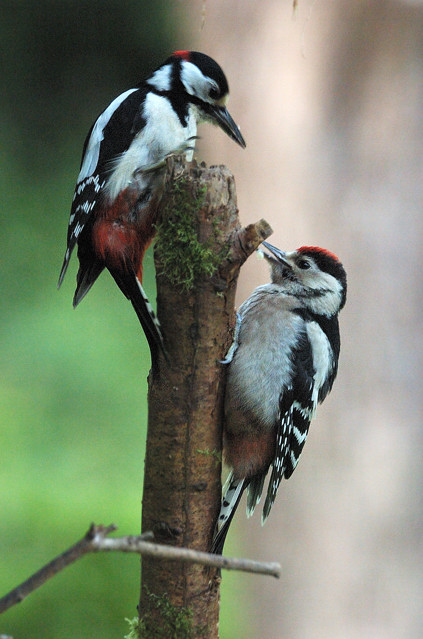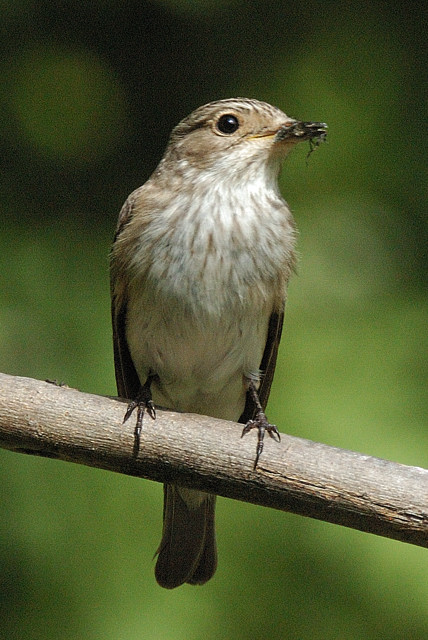General Tips on Photographing Wildlife
On this page, rather then presenting a large article I want to just
provide a range of bullet points to perhaps give you things to think about.
Photo techniques and skills
- Go for sharp images
- Remember that depth of field is very small
on long telephotos.
- Reducing depth of field can improve shots making the bird or animal stand
out and the background less important.
- Try to photograph creatures doing something.
- When animals are walking compose the shot
with an area for them to look into or walk in.
- Don't crop the image too tight, allow a little room for the environment
they are in, you can always trim it off later if you want.
- Make sure you get the colour right, set white balance when you are able.
- Set up your camera before approaching a place where wildlife may be so
you are ready in advance.
- Leave you camera in P (programme/vari
programme mode) when you are not dong
anything with it, in this mode there is a far greater chance that a quickly
grabbed shot will work out.
- When you first see an opportunity get the first shot off quickly, before
the opportunity is lost, then as long as you have time you can perfect and
improve settings as you take more shots. Getting the first shot also reduces
the pressure on you, and you will find you perform better, and think more
about the settings.
- Don't forget about camera shake, keep the shutter speed equivalent or
higher than the focal length unless you have a VR or similar lens. Resting
against a hide, tree or other item can stabilise the camera.
- Take every shot you can even if you don't think it will come out.
|


|
Improving opportunities
- You don't necessarily need to hide from wildlife, often as long as
creatures can see you they are unconcerned about you.
- Generally its not a good idea to walk directly towards them, as they are
likely to then run or fly away. You can get closer by walking at an angle,
even taking a zig zag path in their direction, often this way you can get
quite close.
- If you have animals or birds visiting your garden then don't be tempted to
track them, don't make sudden moves and stay quiet and still. This way they
become used to you, get to realise that you are no danger to them and will
come back.
- There are lots of ways to attract wildlife, including putting out food,
adding a small pond, growing plants that attract butterflies and adding bird
and other boxes.
- On most visits to the countryside you will see wildlife, but a walk along
a canal or river, is likely to be particularly productive.
- Bird reserves have birds as you may expect but often in far smaller
concentration and far further from you than in many other locations. If you
persist however you may see some of the birds that don't come around people as
much.
- You get different creatures in different locations, so varying the
location types that you visit is likely to widen the range of wildlife that
you see.
- You can also combine wildlife photography with other areas like
photographing gardens, and often when visiting a stately pile you will come
across a particularly large array of wildlife.
- A trip out early on a summer morning is particularly productive, you are
likely to come across deer in the open, large birds flying down roads looking
for road kill and a variety of other animals about.
- Butterflies cannot fly until they have warmed up, so on a summer morning
they sit and vibrate until warmed up sufficiently by the sun. Photographing
them at this time is particularly easy, and with butterfly reserves, or nature
reserves/places known for butterflies, there are a lot of opportunities.
- Don't just look for the large or colourful, there is a far larger array
of creatures to discover. There is a lot to discover and miracles of nature
that few have yet seen that you could photograph. Photographing a portrait of
a bee, and seeing its eight eyes is not difficult but discovering the
beautiful eyelashes of a butterfly is a little more of a challenge.
Avoiding trouble
- Don't take risks like hanging out over rivers or climbing cliffs.
- Be aware of tides if visiting coastlines or estuaries, our reference
section gives you links to a lot of information on these.
- None of our wildlife is out looking to harm you, however quite a large
number are able to defend themselves and their young if threatened.
- Don't pick up small cute things unless you know what you are doing, you
may have handled pet mice, but a field mouse can bite quite hard when it
thinks its being attacked.
- Don't rescue young creatures, often their parents know where they are and
can sort them, with a far higher success rate than you can. Many animals hide
their young, so what you think is a small abandoned baby deer is perfectly
normal and in no danger, as long as you leave it alone. Even many small birds
are perfectly alright living on the ground, and many start out this way.
- Try and avoid moving creatures from one place to another, the food and
other needs they have may not be present in another location.
- Don't release any non native animals ever, its not only unkind to them,
but can also put others at risk. For example the imported grey squirrels carry
a virus that kills off our native red squirrels, and American crayfish
have replaced our native variety, over many of our waterways. In a similar way
many of the native animals and birds are under threat from mink, and these
were released by animal rights people who thought they were rescuing them but
ended up doing enormous harm, by releasing a predator that should not be in
our countryside.
|

 |
The law and wildlife
- Be aware of wildlife laws, both in relation to wildlife and plants.
- There is a lot of misinformation around, for example recently we had a
blitz of TV coverage on organised crime being involved in poaching deer, it
was said they could catch a couple of deer in an evening and sell them for
£40 each. Not only is £80 not enough to interest serious criminals, you also
have to remember that no one owns the deer and those promoting this are into
shooting them. The same people managed to persuade the government that deer
was a pest and culling them was necessary to stop crop damage.
- You can photograph what you like from a public right of way, this includes
footpaths and tracks with a right of way. Most country people will show you
things and hardly ever will you have objections to photographing wildlife. If
they seem concerned it may be that they think you may be casing their home
with a view to breaking in, so speak to them and put their mind at rest.
- People in the countryside are naturally more friendly and helpful than
most in towns, and even town people who don't speak to others in the town tend
to get to talk to others they meet in the countryside. So although when you
walk through the town you don't speak to people who you pass, this is quite
normal in the countryside.
See Also
Wildlife photography

Animal Behaviour

Equipment suitable for
wildlife photography

Hides and camouflage
 |